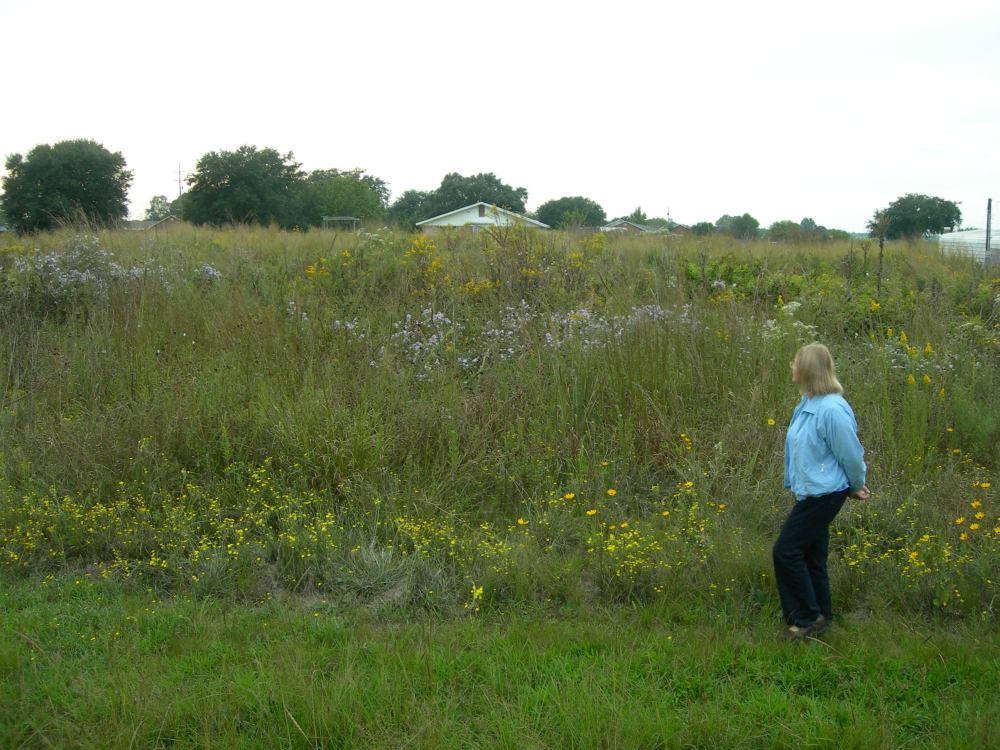
Gail looks out over the October gardens. The small yellow at her feet are Grass-leaved golden asters, while the larger yellow flowers are short Swamp sunflowers. The background is filled with blooms of big grasses, Willow aster and a variety of goldenrods.
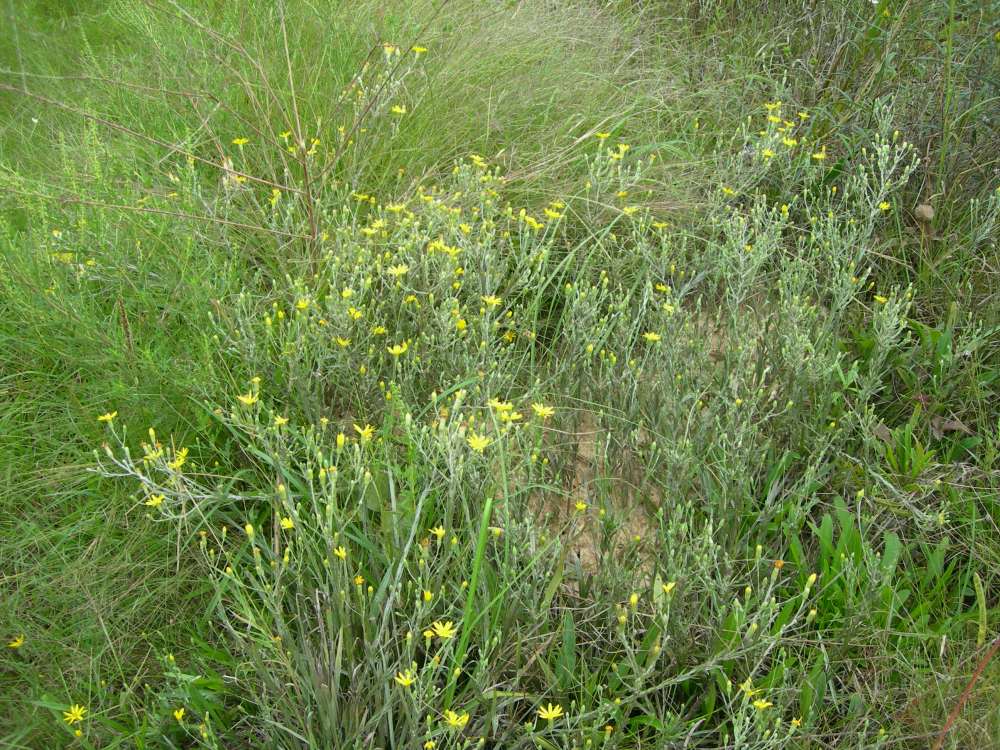
Pityopsis graminifolia (Grass-leaved golden aster).
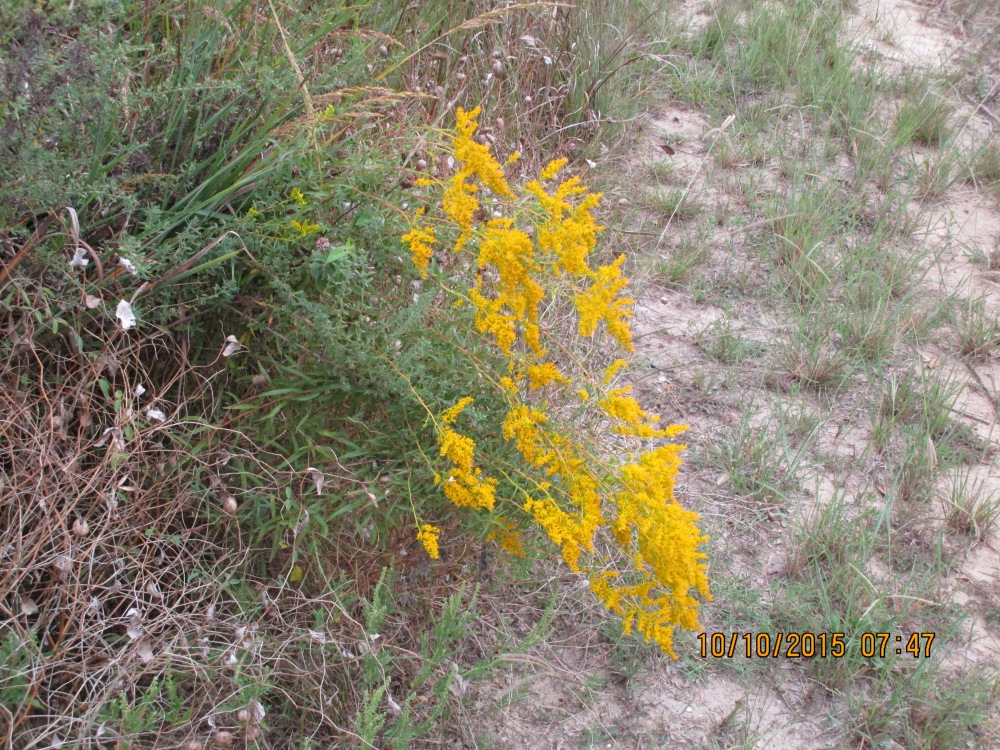
Solidago odora (Sweet goldenrod) leans into a trail at the Cajun Prairie Gardens.
The prairie reaches its maximum height. In areas where Little bluestem predominates, the prairie is only 4 feet tall. In other areas, the grasses and forbs reach 9-10 feet. This is the month when the sunflower family makes its final push to maximize its views in the prairie.
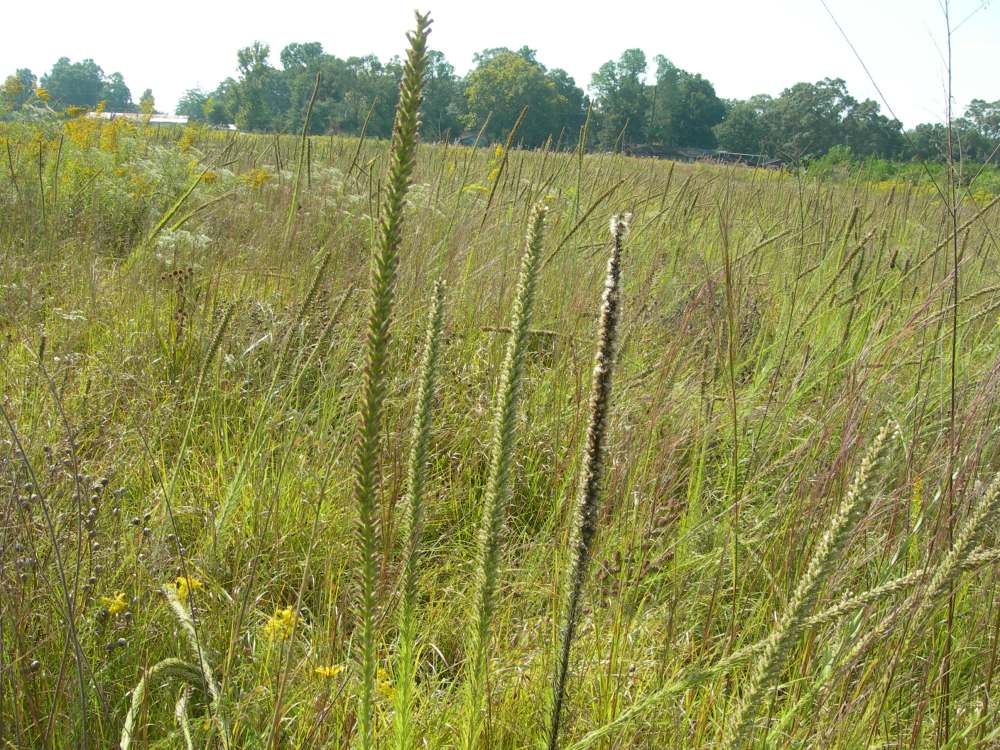
The Cajun Prairie Restoration Project in Eunice is at the end of the blooming season of the Kansas gayfeather. Thousands of stems with developing seed heads are visible.
The last of the Liatris pycnostachya and L. elegans bloom as the month progresses. Most of the wildflowers are amid their last stand, and blooms become uncommon except for some of the big sunflowers and their relatives.
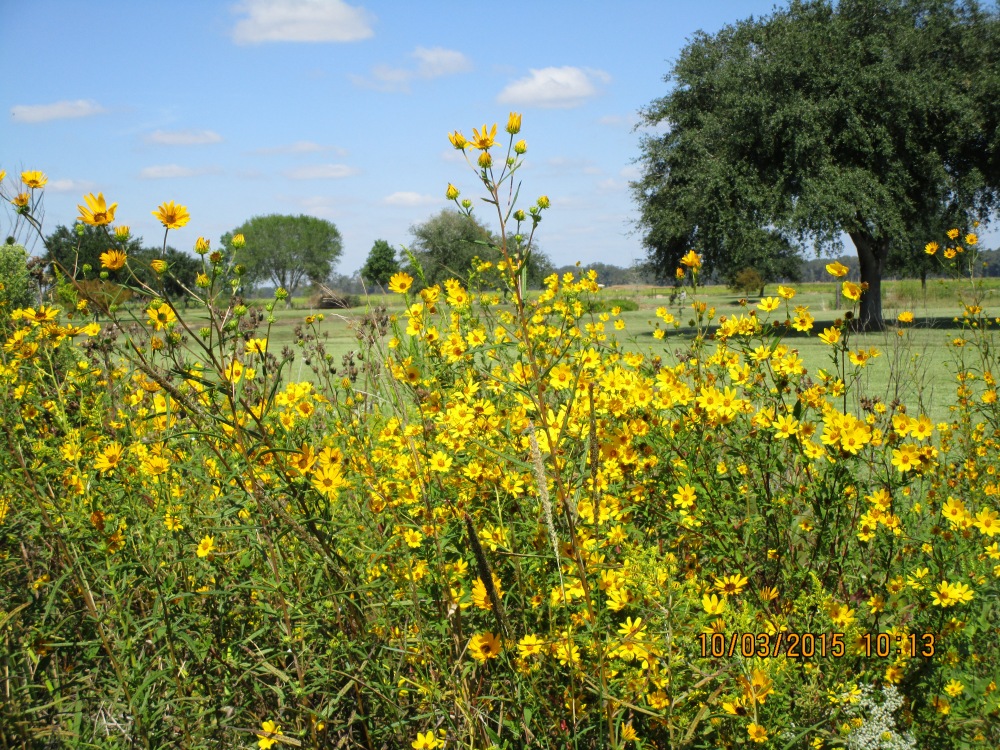
Swamp sunflowers are showy throughout the month of October.
Bidens aristosa (Beggar’s ticks) completes its bloom early in the month just as Helianthus angustifolius (Swamp sunflower), a perennial sunflower that has linear leaves and blooms. These early succession sunflowers predominate during the first 10 years of restoration, when they literally disappear. But for those 10 years, September and October are splendid with plants reaching upwards to 10 feet.
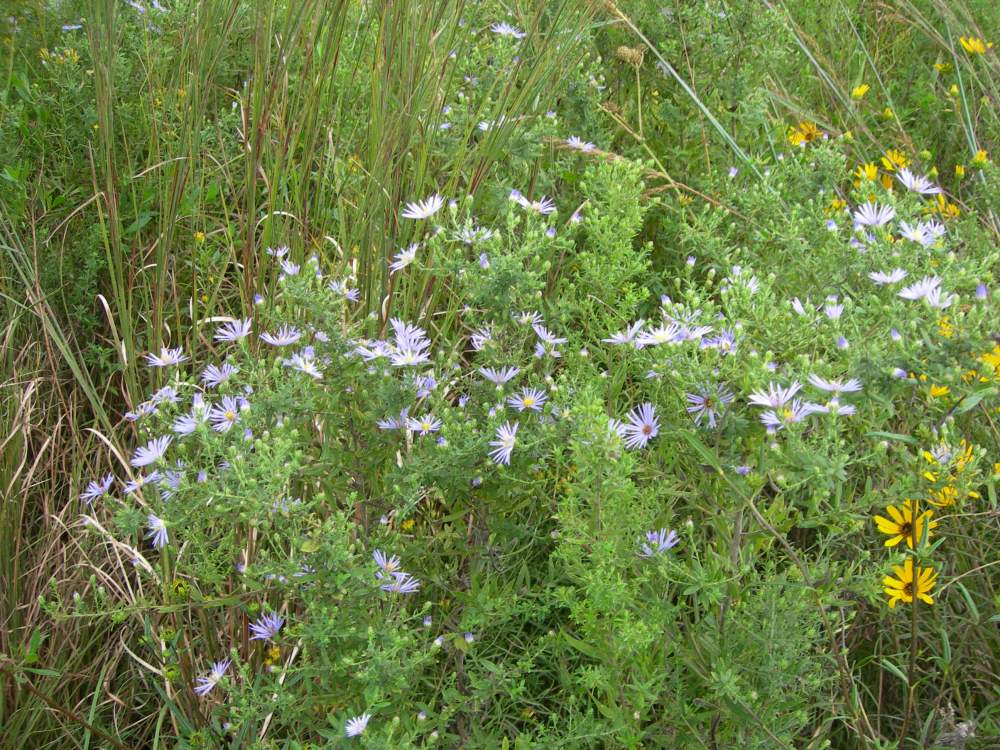
Eurybia hemisphaerica (Showy aster).
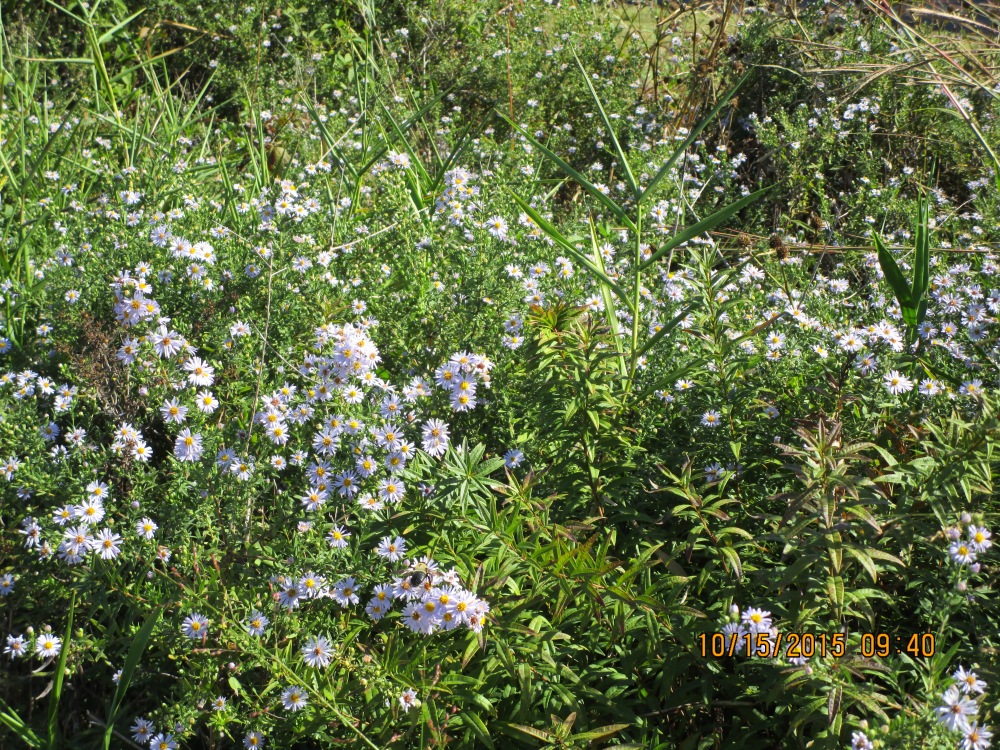
Symphyotrichum praealtum (Willow aster).
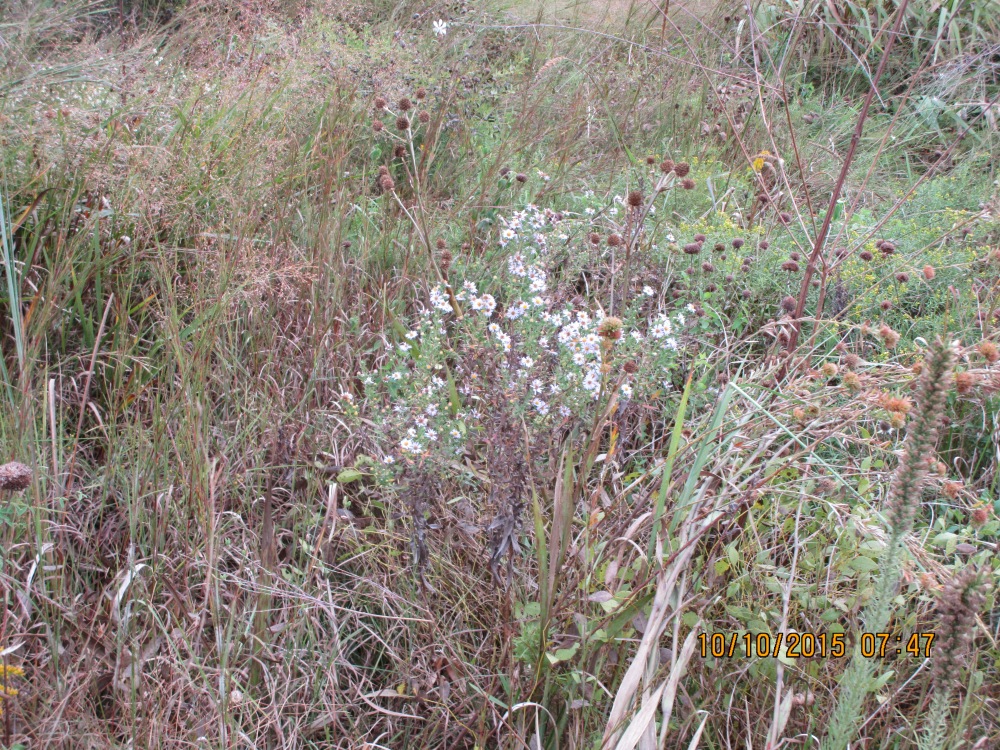
Symphyotrichum dumosum (Rice button aster).
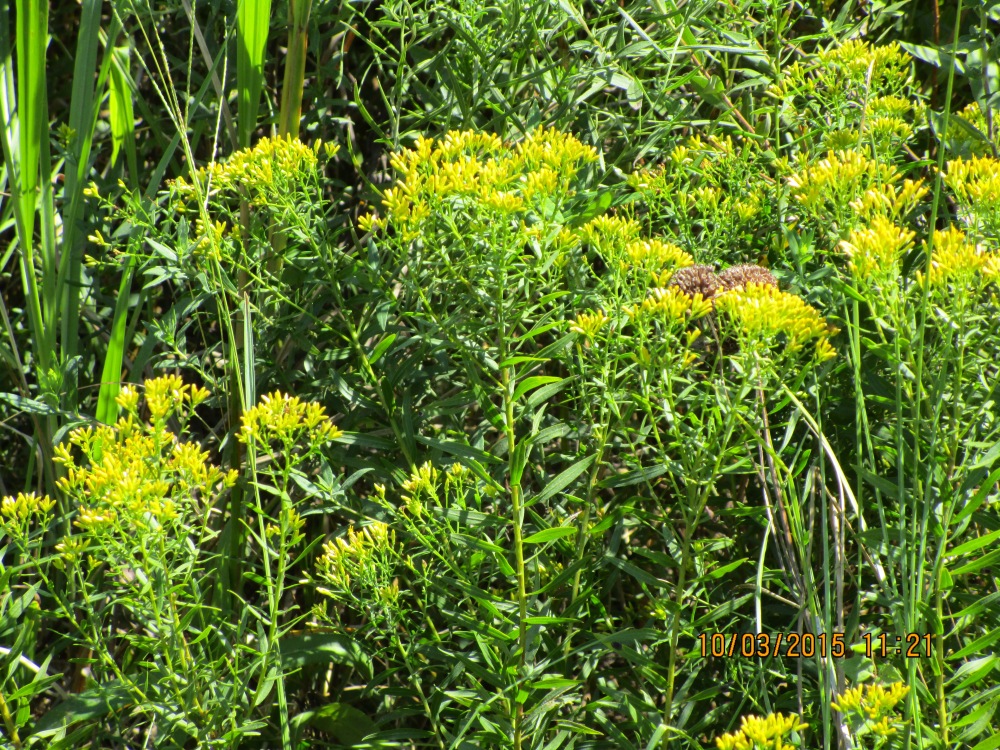
Euthamia sp. (Flat-top goldenrod)
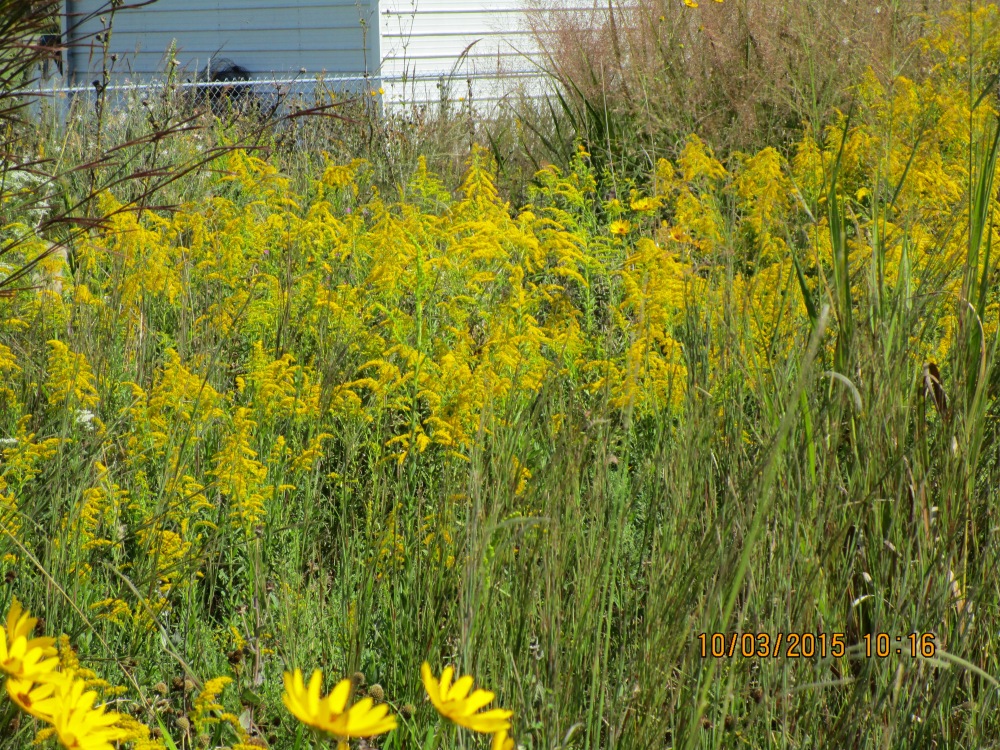
A mix of goldenrods including Solidago altissima (Common goldenrod).
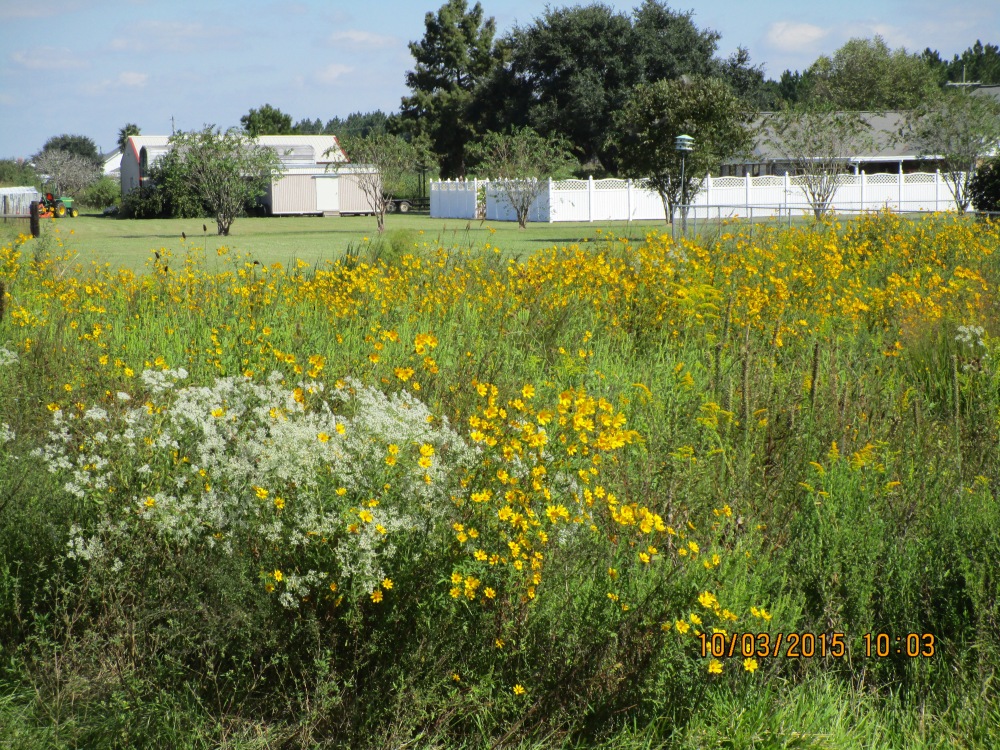
Eupatorium sp. (Thoroughworts or Bonesets; white) in field of Swamp sunflowers.
Goldenrods and ‘Asters’ now make a grand show. Euthamia spp. are in splendid bloom as early succession sunflowers. The ‘Asters’ are now divided into several genera including Symphyotrichum and Eurybia. Other groups have also been divided, e. g., Chrysopsis and Pityopsis, Eupatorium and Conoclinium, and others.
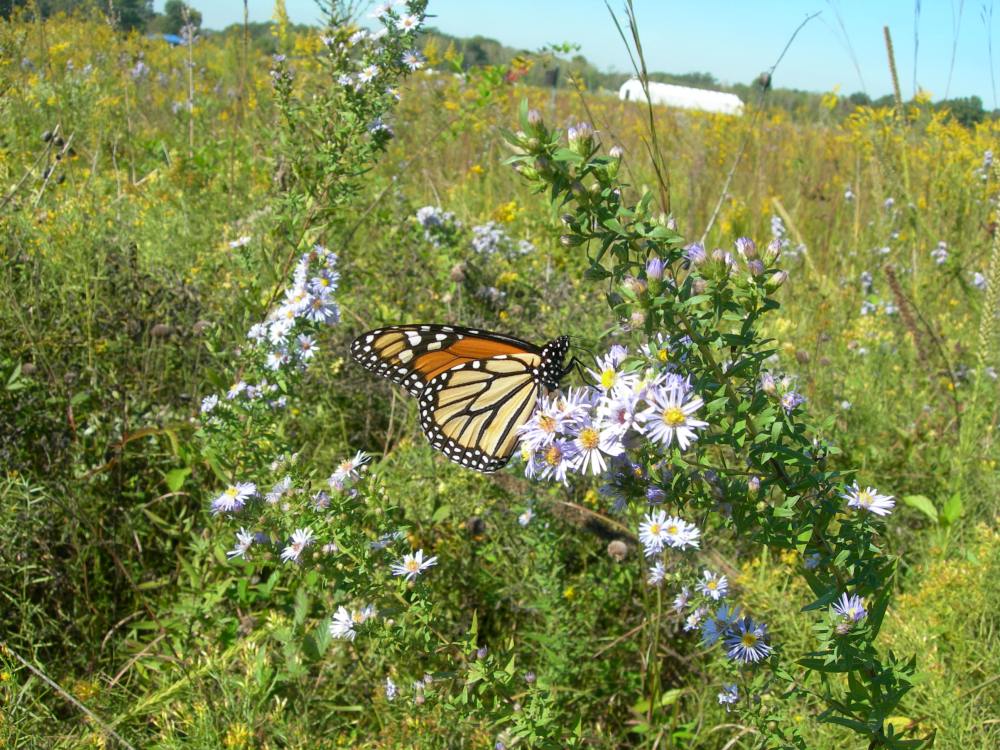
Monarch nectaring on Willow aster.
The Monarchs make their return journey through the Cajun Prairie as they migrate to the Gulf coast and Mexico. They draw nectar from many of the sunflowers, especially ‘Asters’ and Swamp sunflower.
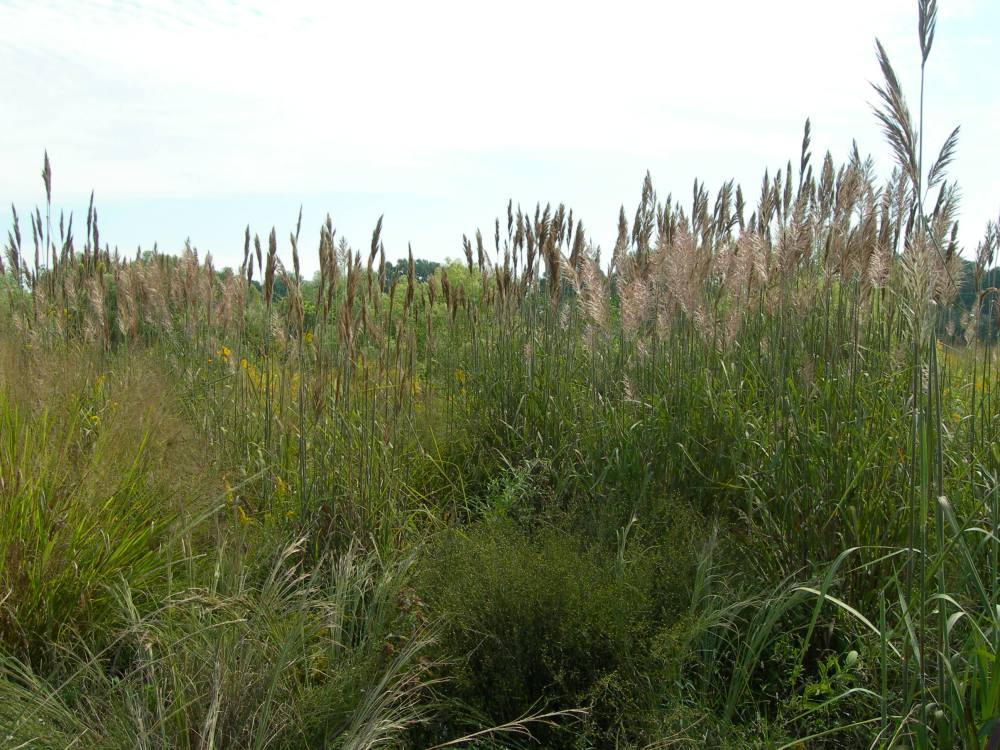
Giant plume grass.
Saccharum giganteum (aka Erianthus giganteus) (Giant plume grass) is found in wet areas of the Cajun Prairie Restoration Project in Eunice. It gets to at least 10 feet in height. In the morning, the spray of flowers (without petals or sepals) takes on a reddish color that is breath-taking. This native rivals the introduced Pampas grass in beauty and elegance.
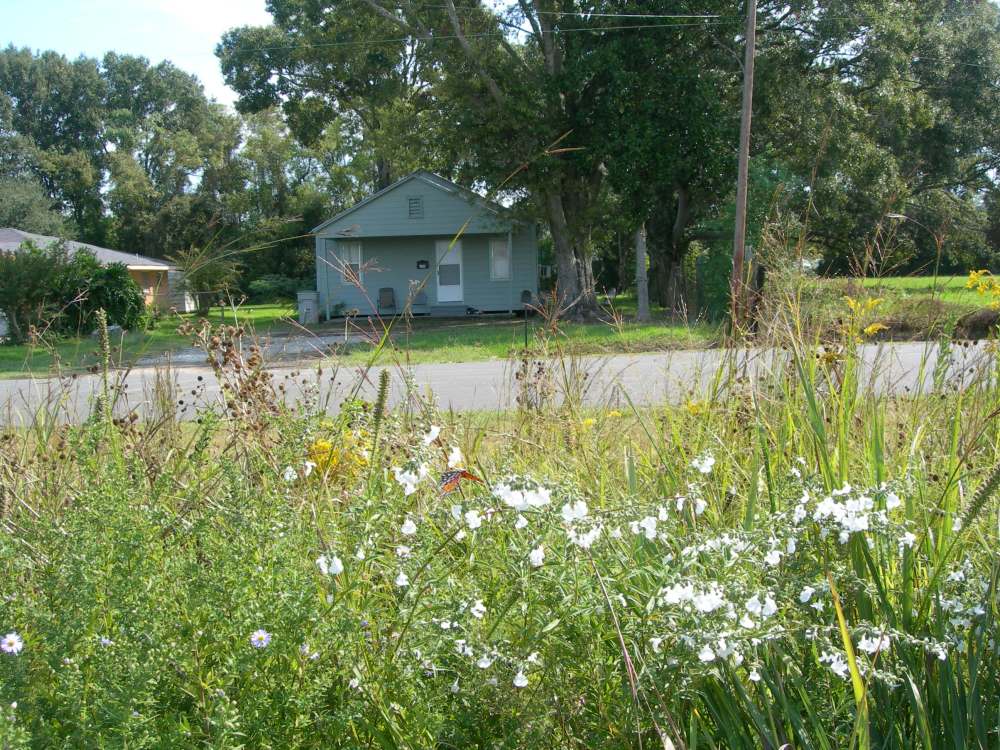
White-flowered Blue sage.
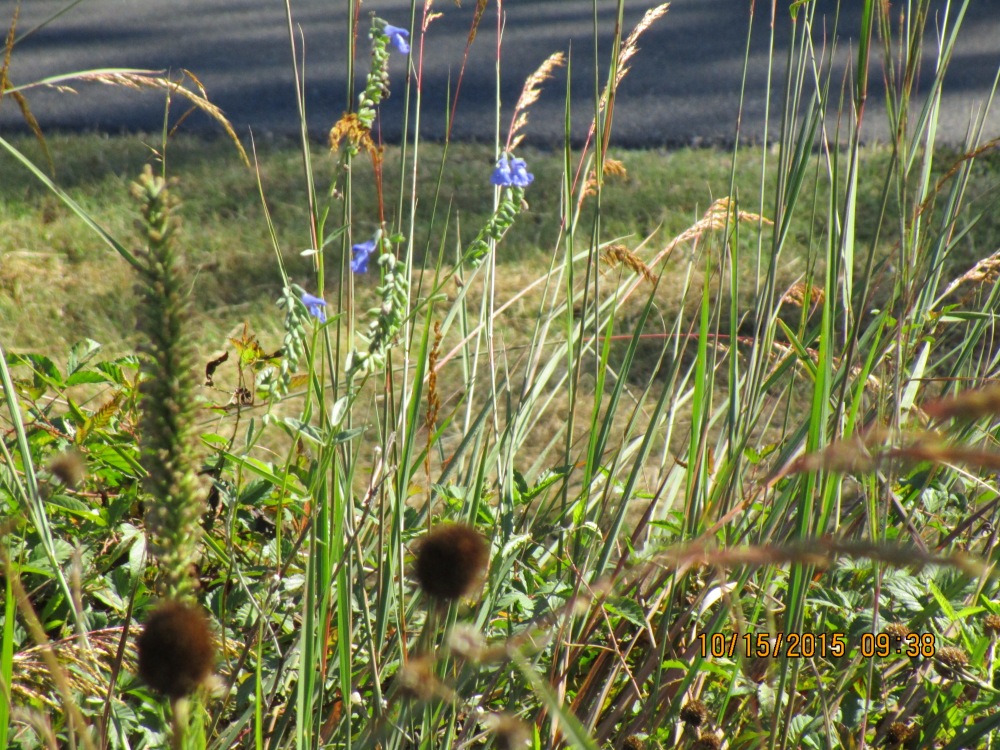
Blue-flowered Blue sage.
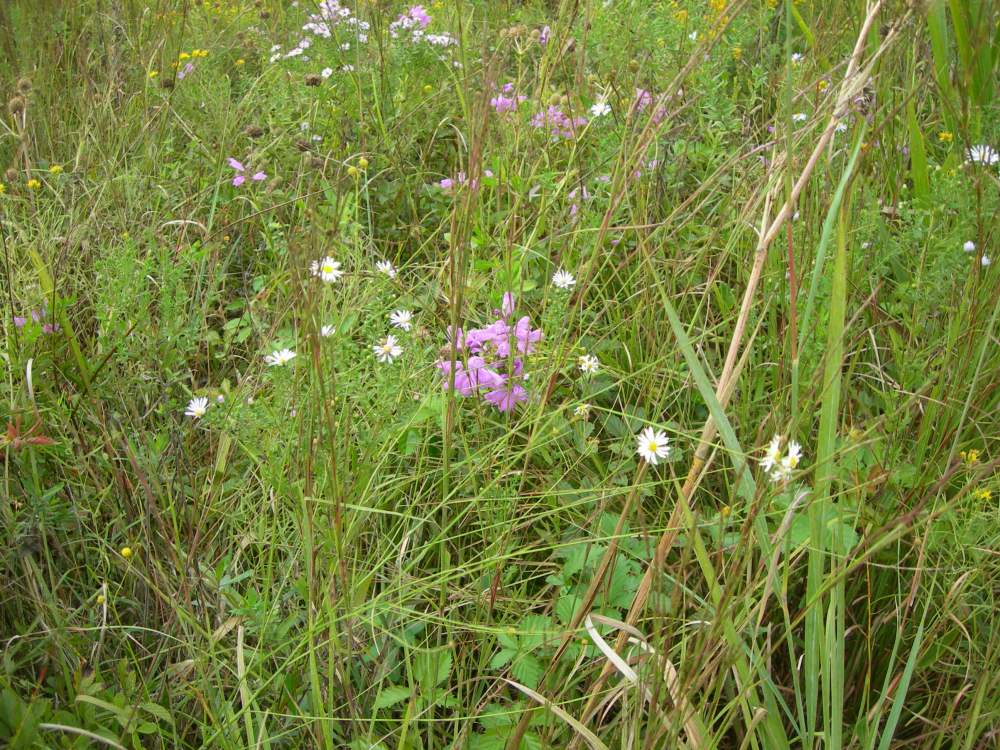
Obedient plant (pink) with Willow aster.
Salvia azurea (Blue sage) blooms magnificently. The white flowered form is more common in the Cajun Prairie. Obedient plant also continues blooming. White-leaf mountain mint continues to bloom. Blue mist flower, Spotted bee balm and Grassleaf goldenaster bloom magnificently.
Views from the past:
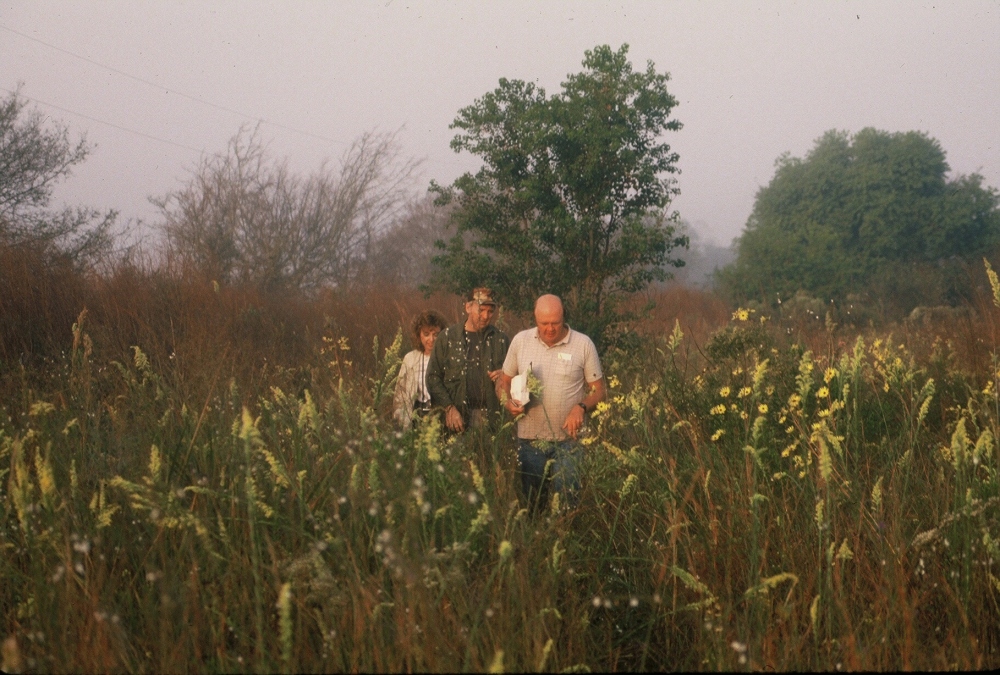
Charles Allen leads Phillip Bourgoeis and guest through an October remnant prairie in the 1980s. Solidago rugosa (Wrinkled-leaf goldenrod) predominates the view.
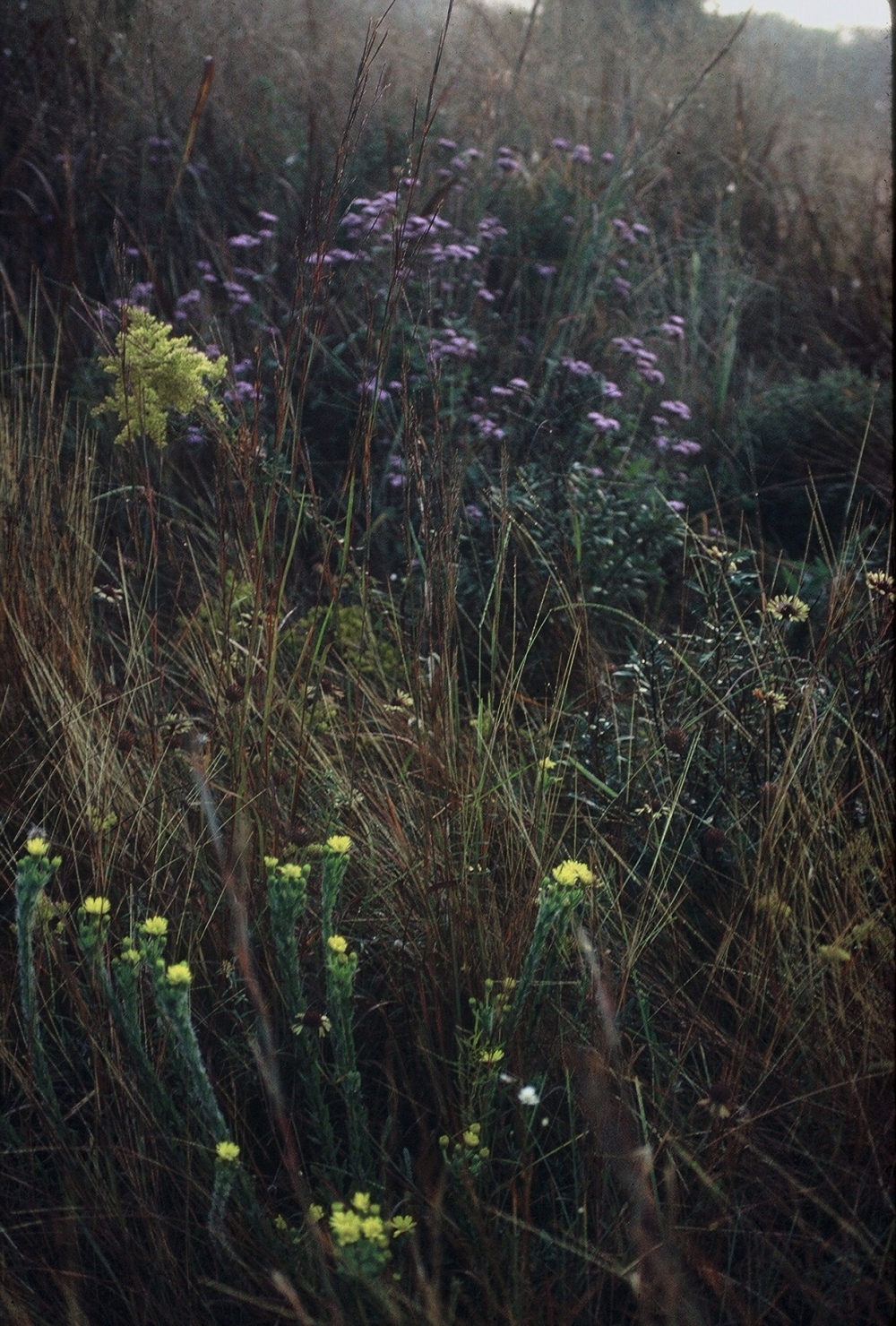
Fenton prairie remnant in October 1988. The yellow flowers in the foreground are Chrysopsis mariana (Maryland golden asters). Conoclinium coelestinum (Blue mistflower), Gaillardia aestivalis (Indian blanket), and Sweet goldenrod are also visible in the view.
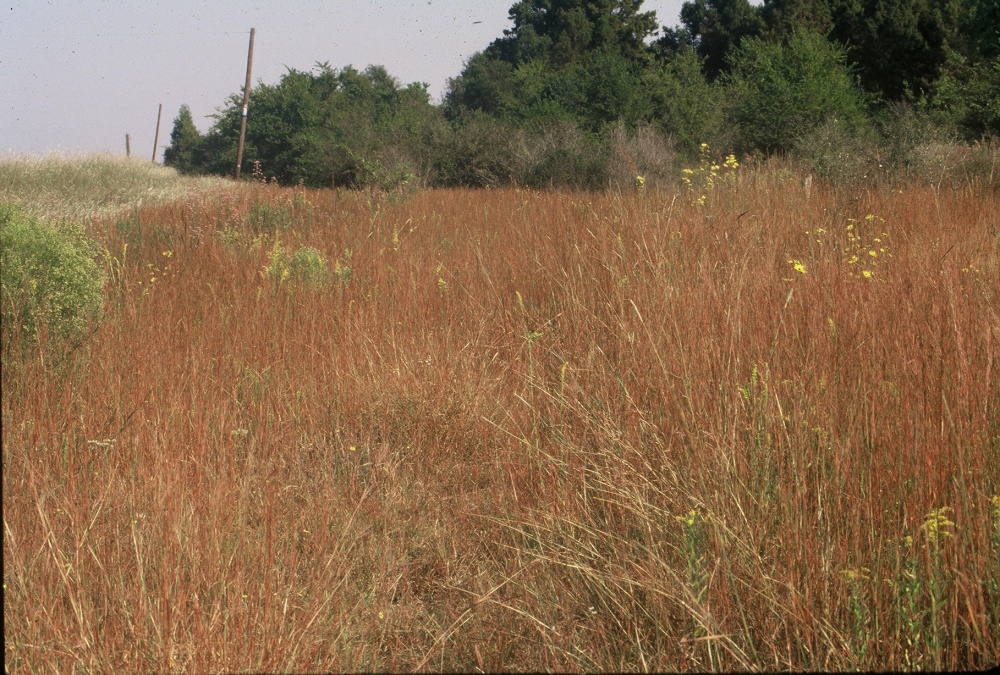
A view of the Woodlawn prairie remnant in October 1988–it is now part of a 4-lane highway (U. S. 165).
What was blooming in the Cajun Prairie Gardens on October 1, 2015?
- Silphium laciniatum
- Silphium gracile
- Gaura lindheimeri
- Rudbeckia hirta
- Coreopsis tinctoria
- Solidago spp.
- Ruellia spp.
- Euphorbia corallata
- Conoclinium coelestinum
- Rudbeckia hirta
- Eryngium yuccifolium
- Ipomoea spp.
- Chamescrista fasciculata
- Passiflora incarnata
- Canna spp.
- Coreopsis tripteris
- Helianthus mollis
- Liatris pycnostachya
- Liatris squarrosa
- Salvia azurea
- Hydrolea ovata
- Rhexia mariana
- Strophlostyles sp.
- Centrosema virginianum
- Rudbeckia subtomentosa
- Gaura longiflora
- Pycnanthemum albescens
- Vernonia gigantea
- Monarda punctata
- Physostegia virginiana var. praemorsa
- Eupatorium spp.
- Boltonia spp.
- Agalinis spp.
- Bidens aristosa
- Symphyotrichum praealtum
- Symphyotrichum dumosum
- Strophlostyles umbellata
- Euthamia spp.
- Pluchea spp.
- Aster spp.
- Symphyotrichum concolor
- Eurybia hemisphaerica
- *Baccharis halimifolia
- Pitiopsis graminifolia
- Chrysopsis mariana
*first blooms appear
Posted by M. F. Vidrine 022316 (malcolmvidrine@yahoo.com)